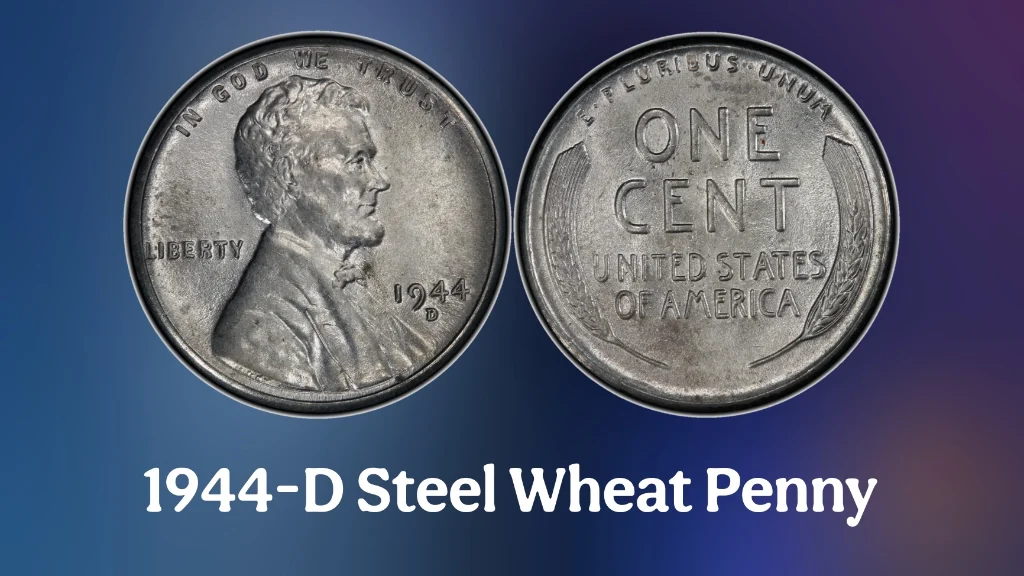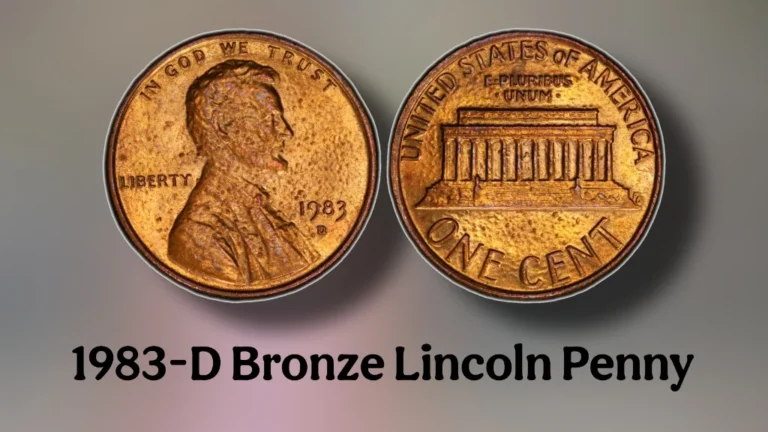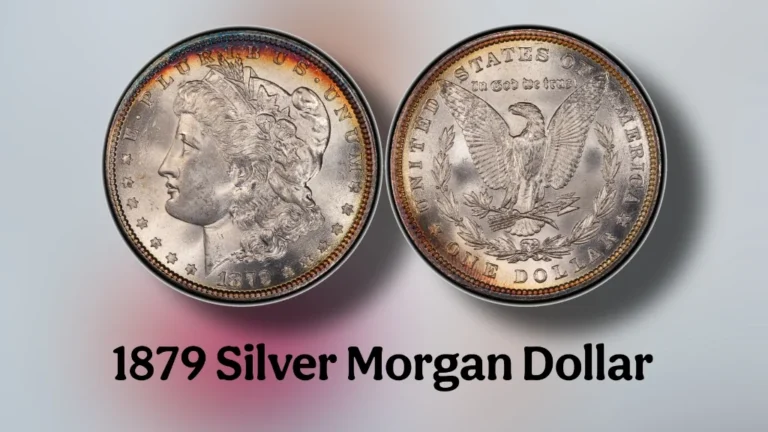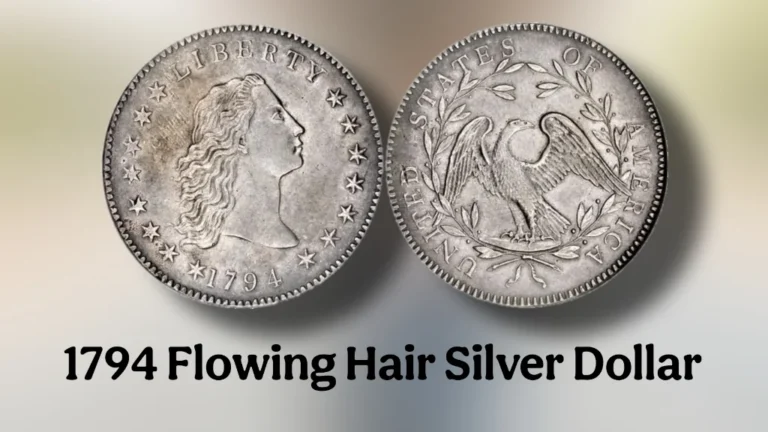The 1944-D Steel Wheat Penny is a numismatic treasure, coveted by collectors for its rarity, historical significance, and staggering value. This coin, a rare error from the Lincoln Wheat Penny series, stands out due to its accidental production during a pivotal moment in American history—World War II.
With only a handful known to exist, the 1944-D Steel Wheat Penny commands prices that can reach into the hundreds of thousands, making it one of the most valuable pennies ever minted.
Historical Context
The Lincoln Wheat Penny, designed by Victor David Brenner, was minted from 1909 to 1958, featuring Abraham Lincoln on the obverse and wheat stalks framing “ONE CENT” on the reverse. During World War II, copper was critical for military use, leading the U.S. Mint to produce 1943 pennies from zinc-coated steel.
Also read – 1950-D Jefferson Nickel: History, Value, and Collector’s Guide
By 1944, the Mint returned to a copper-based alloy (95% copper, 5% zinc), using recycled shell casings from the war effort. However, a few 1944 pennies were mistakenly struck on leftover 1943 steel planchets, creating the rare 1944-D Steel Wheat Penny at the Denver Mint.
This “transitional error” occurred when steel planchets, likely left in the Mint’s hoppers, were accidentally used in 1944 production. Only seven 1944-D Steel Wheat Pennies are known to exist, making them extraordinarily scarce compared to the over 430 million copper 1944-D pennies minted.
Key Features
- Obverse: Abraham Lincoln’s portrait, with “IN GOD WE TRUST” above, “LIBERTY” to the left, and “1944” with the “D” mintmark below.
- Reverse: Two wheat stalks framing “ONE CENT” and “UNITED STATES OF AMERICA,” with “E PLURIBUS UNUM” at the top.
- Composition: Zinc-coated steel, unlike the standard 1944 copper-zinc alloy.
- Weight: 2.7 grams (lighter than the 3.11-gram copper pennies).
- Diameter: 19.05 mm.
- Unique Trait: Magnetic due to its steel composition, a quick way to test authenticity.
Rarity and Value
The 1944-D Steel Wheat Penny’s value stems from its extreme rarity and historical intrigue. With only seven confirmed specimens, it is far scarcer than the 1944 Steel Pennies from Philadelphia (estimated 25–30 coins) and San Francisco (only two known). Auction records highlight its worth: a 1944-D Steel Wheat Penny sold for $180,000 in 2021, while a 1944-S Steel Penny reached $408,000 in 2008, setting a record for a Lincoln cent at the time.
The value varies by condition, with uncirculated examples fetching the highest prices. Below is a chart of approximate values based on grade (data sourced from numismatic references, as of 2025):
| Grade | Approximate Value (USD) |
|---|---|
| Good (G-4) | $10,000 – $20,000 |
| Fine (F-12) | $20,000 – $30,000 |
| Very Fine (VF-20) | $30,000 – $50,000 |
| Extremely Fine (EF-40) | $50,000 – $80,000 |
| About Uncirculated (AU-50) | $80,000 – $120,000 |
| Uncirculated (MS-63) | $120,000 – $200,000 |
| Uncirculated (MS-65) | $200,000 – $400,000+ |
Note: Prices are estimates and can vary based on market demand, auction results, and coin condition. Authentication by PCGS or NGC is essential due to the coin’s high value and risk of counterfeits.
Also read – 10 Rare Liberty Seated Dimes Worth Big Money
Why Collectors Covet It
The 1944-D Steel Wheat Penny is a collector’s dream for several reasons:
- Rarity: With only seven known examples, it’s one of the rarest U.S. coins.
- Historical Significance: Minted during WWII, it reflects the era’s material shortages and the Mint’s wartime adaptations.
- Error Appeal: As a transitional error, it captures the fascination of collectors who seek unique minting mistakes.
- Investment Potential: High-grade specimens have consistently set auction records, making them a prized investment.
Tips for Collectors
- Authentication: Use a magnet to verify the coin’s steel composition, but always seek professional grading from PCGS or NGC to confirm authenticity.
- Condition: Look for coins with minimal wear and a bright, silvery appearance, as oxidation can affect value.
- Storage: Store in a protective holder in a cool, dry environment to prevent rust or damage.
- Market Research: Monitor auction results and consult reputable dealers to stay informed on current values.
Conclusion
The 1944-D Steel Wheat Penny is more than a coin—it’s a rare artifact of WWII-era ingenuity and a testament to the U.S. Mint’s adaptability. Its scarcity, historical context, and potential for six-figure auction prices make it a holy grail for numismatists.
Whether you’re a seasoned collector or a curious beginner, finding a 1944-D Steel Wheat Penny could turn pocket change into a fortune, but always verify its authenticity to ensure you’ve struck numismatic gold.
FAQs
1. What makes the 1944-D Steel Wheat Penny so rare?
It was a minting error—struck on leftover 1943 steel planchets instead of copper ones, with only seven known to exist.
2. How can I tell if I have a real 1944-D Steel Penny?
Use a magnet—if it sticks, it’s steel. But always confirm with professional grading services like PCGS or NGC.
3. What is the coin made of?
Zinc-coated steel, unlike the standard 1944 pennies which were copper-based.
4. How much is a 1944-D Steel Wheat Penny worth?
Depending on condition, it can range from \$10,000 to over \$400,000.
5. Why do collectors value this coin so highly?
Its extreme rarity, historical significance from WWII, and error status make it a coveted and valuable collectible.




